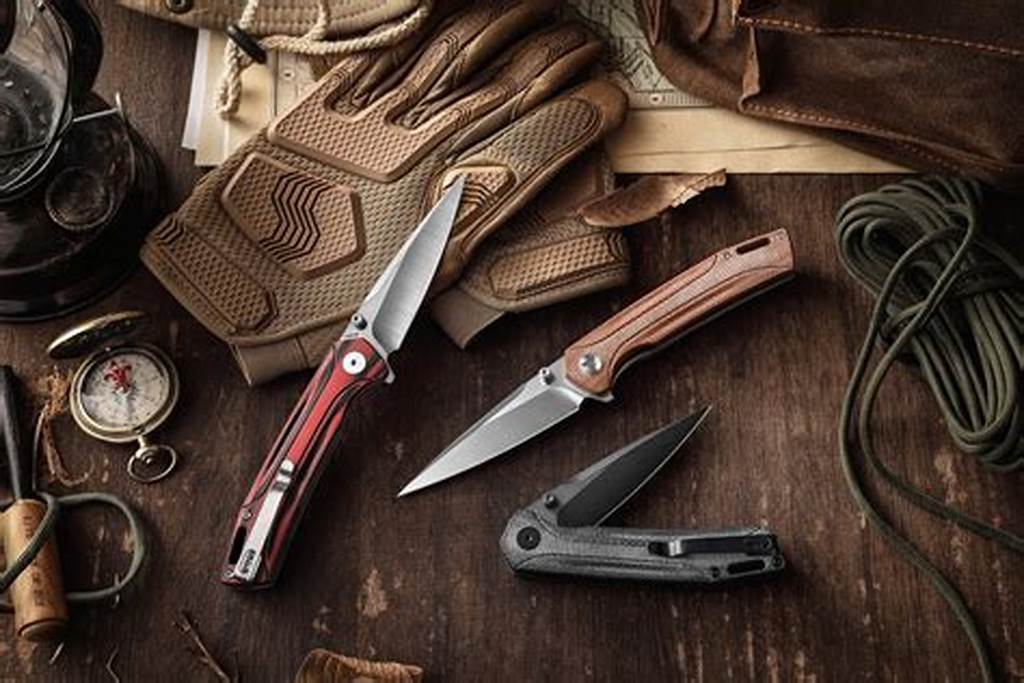In a world full of gadgets and tools, there’s one item that has stood the test of time— the pocket knife. This small, foldable tool has been a trusty companion for centuries, used by adventurers, craftsmen, and everyday people alike. Whether you need to open a package, cut some rope, or handle a small repair, a pocket knife can be incredibly useful. But what exactly makes a pocket knife such a valuable tool, and how do you choose the right one for your needs? In this article, we’ll explore the versatility of pocket knives, the different types available, and why every person should consider carrying one.
The History of the Pocket Knife
Pocket knives have been around for centuries, with the earliest known examples dating back to the Iron Age. These early versions were simple folding knives made of iron, primarily used by the Romans for daily tasks. Over time, the design and materials of pocket knives evolved, making them more durable and versatile.
In the 19th century, pocket knives became more popular and accessible, thanks to mass production. During this time, Swiss Army knives were introduced, featuring multiple tools in one compact design. This innovation turned the pocket knives into a multi-functional tool, capable of handling a wide range of tasks. Today, pocket knives come in various designs and materials, each offering unique features to suit different needs.
Types of Pocket Knives
When it comes to choosing a pocket knife, there are several types to consider, each with its own set of features. Here are some of the most common types of pocket knives:
- Traditional Folding Knives: These are the most basic type of pocket knife, featuring a single blade that folds into the handle. Traditional folding knives are simple, reliable, and easy to carry. They are ideal for everyday tasks like opening letters, cutting string, or slicing fruit.
- Multi-Tool Knives: Often associated with Swiss Army knives, multi-tool knives come with various tools, such as screwdrivers, scissors, and can openers, in addition to the main blade. These knives are incredibly versatile and are perfect for those who need a tool that can handle multiple tasks.
- Tactical Knives: Tactical pocket knives are designed for more demanding tasks, often used by military personnel, law enforcement, and outdoor enthusiasts. They typically feature a more robust blade and a sturdy handle, making them suitable for cutting through tough materials or for self-defense.
- Gentleman’s Knives: These pocket knives are smaller, lighter, and more elegant in design. They are often used as a dress accessory or for light tasks. Gentleman’s knives are perfect for those who want a functional yet stylish tool that fits comfortably in a pocket or suit.
- Assisted-Opening Knives: Assisted-opening knives have a mechanism that helps to quickly open the blade with one hand. These knives are popular among those who need to access their blade quickly, such as first responders or outdoor enthusiasts. They offer convenience and speed, making them a favorite among many users.
Key Features to Look for in a Pocket knives
Choosing the right pocket knives depends on what you plan to use it for. Here are some key features to consider when selecting a pocket knives:
- Blade Material: The material of the blade is crucial in determining its durability and sharpness. Common materials include stainless steel, which is resistant to rust and easy to maintain, and carbon steel, which holds a sharper edge but requires more care to prevent rust.
- Blade Shape: Pocket knives come with various blade shapes, each suited for different tasks. For example, a drop point blade is versatile and good for general use, while a tanto blade is better suited for piercing tough materials.
- Handle Material: The handle of a pocket knives should provide a comfortable and secure grip. Handles are made from various materials, including wood, plastic, metal, and G-10 (a high-pressure fiberglass laminate). Choose a handle that feels good in your hand and offers the right balance of weight and durability.
- Locking Mechanism: Good pocket knives should have a reliable locking mechanism to keep the blade securely in place when in use. Common locking mechanisms include liner locks, frame locks, and lock-back designs. Make sure the lock is easy to operate and holds the blade firmly in place.
- Size and Weight: Consider the size and weight of the pocket knives, especially if you plan to carry it every day. A knife that’s too large or heavy can be cumbersome, while a smaller, lighter knife might be easier to carry but less effective for certain tasks.
Everyday Uses for a Pocket Knife
One of the biggest advantages of carrying a pocket knives is its versatility. Here are some common everyday uses for a pocket knife:
- Opening Packages: Whether it’s a delivery from an online store or a gift from a friend, a pocket knife can easily slice through tape and packaging materials, making it quick and easy to access your items.
- Cutting Rope or String: Pocket knives is handy for cutting rope, string, or twine when you’re working on a project, tying down items, or need to make a quick repair.
- Preparing Food: If you’re on a hike, camping, or just out for a picnic, a pocket knives can help you slice fruit, cheese, or other foods. Some pocket knives even come with special tools for food preparation, such as bottle openers or small serrated blades.
- First Aid: In an emergency,pocket knives can be a valuable tool for cutting bandages, removing splinters, or even fashioning a makeshift tourniquet. It’s a good idea to include pocket knives in your first aid kit.
- Self-Defense: While it’s not something anyone wants to think about, a pocket knives can be used for self-defense if the need arises. Tactical pocket knives, in particular, are designed with this purpose in mind, offering a sturdy blade and easy access in critical situations.
- Crafts and Repairs: Pocket knives can be a useful tool for various DIY projects, crafts, or small repairs around the house. Whether you need to cut materials, sharpen a pencil, or open a can of paint, a pocket knives can come in handy.
Caring for Your Pocket Knife
To ensure your pocket knives stays in good condition and serves you well for years to come, it’s important to take proper care of it. Here are some tips for maintaining your pocket knife:
- Keep It Clean: Regularly clean your pocket knife by wiping down the blade and handle with a damp cloth. If your knives gets wet, dry it thoroughly to prevent rust, especially if the blade is made of carbon steel.
- Sharpen the Blade: A sharp blade is safer and more effective than a dull one. Use a sharpening stone or a professional sharpening service to keep your knife’s edge in top condition.
- Oil the Moving Parts: If your pocket knives has a folding mechanism, it’s a good idea to oil the pivot point occasionally to ensure smooth operation. Use a light oil, such as mineral oil, and apply a small amount to the joint.
- Store It Properly: When not in use, store your pocket knives in a dry place to prevent rust and corrosion. If your knife has a sheath, use it to protect the blade and keep it secure.
Also Read: Best Cologne for Men
Conclusion
A pocket knife is more than just a tool; it’s a symbol of preparedness and self-reliance. Whether you’re an outdoor enthusiast, a DIYer, or just someone who likes to be ready for anything, pocket knives can be an invaluable companion. With so many types and features to choose from, finding the right pocket knives is all about matching the tool to your lifestyle and needs. Once you have the right knives in hand, you’ll wonder how you ever managed without one. So, take the time to explore your options, care for your knife properly, and enjoy the many benefits of carrying this timeless tool.

